If you’re visiting Istanbul—whether for a few days, a long layover, or a slow month of exploration—cruising the Bosphorus is one of the most visually rich, relaxing, and logistically easy ways to experience the city.
It’s affordable, accessible year-round, and offers front-row views to centuries of architectural and cultural history—Ottoman palaces, seaside mansions, historic mosques, and ornate embassies—all from the comfort of a boat.
Even if you’re short on time or energy, a Bosphorus cruise gives you a panoramic sense of Istanbul’s geographic sprawl and cultural layers. In just 90 minutes, you’ll sail between two continents, float past iconic domes and minarets, and see the city lit up in warm, late-afternoon light.
We did this cruise, and very much enjoyed it.
Daytime or sunset: what’s the best time to go?
You can cruise the Bosphorus at nearly any hour, but we recommend aiming for golden hour or sunset if you can. As the sun drops, the facades of Dolmabahçe Palace and Ortaköy Mosque glow with light. The city softens. You’ll often get a slight breeze off the water, and depending on the season, the skyline transitions from vivid blue to dusky orange to violet.
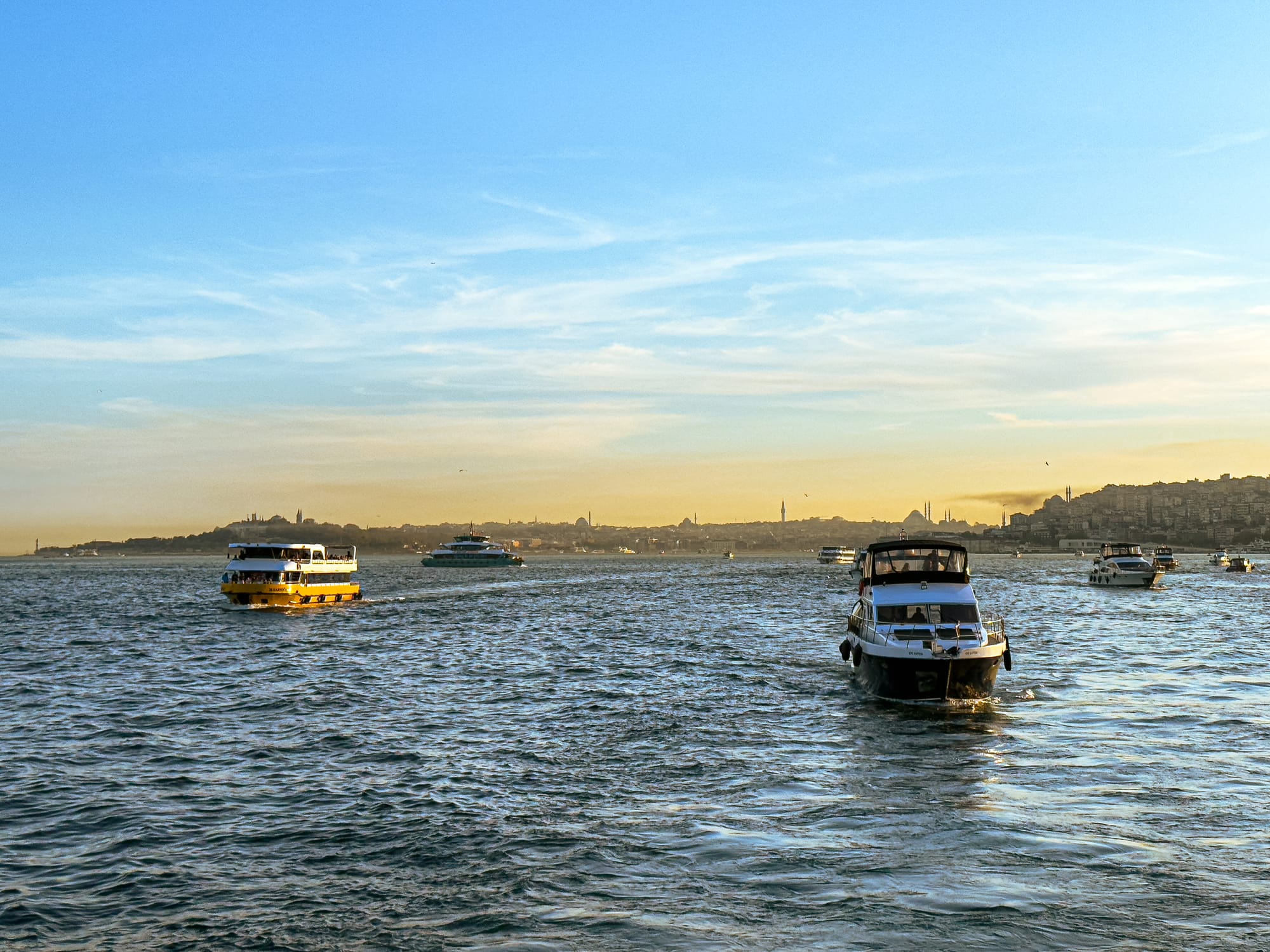
Morning cruises are quieter and better for photography with less haze. But for mood, atmosphere, and romance, evening wins.
What You'll See Along the Way
A typical cruise departs from the Eminönü or Kabataş docks, then traces a route northward along the European side of the city before looping back down along the Asian side. Major sights include:
Galata Tower
One of the first sights you’ll spot as your cruise begins is the Galata Tower—an iconic silhouette rising from the Beyoğlu district. Dating back to the 14th century, this cylindrical tower has served as everything from a watchtower to an observatory.
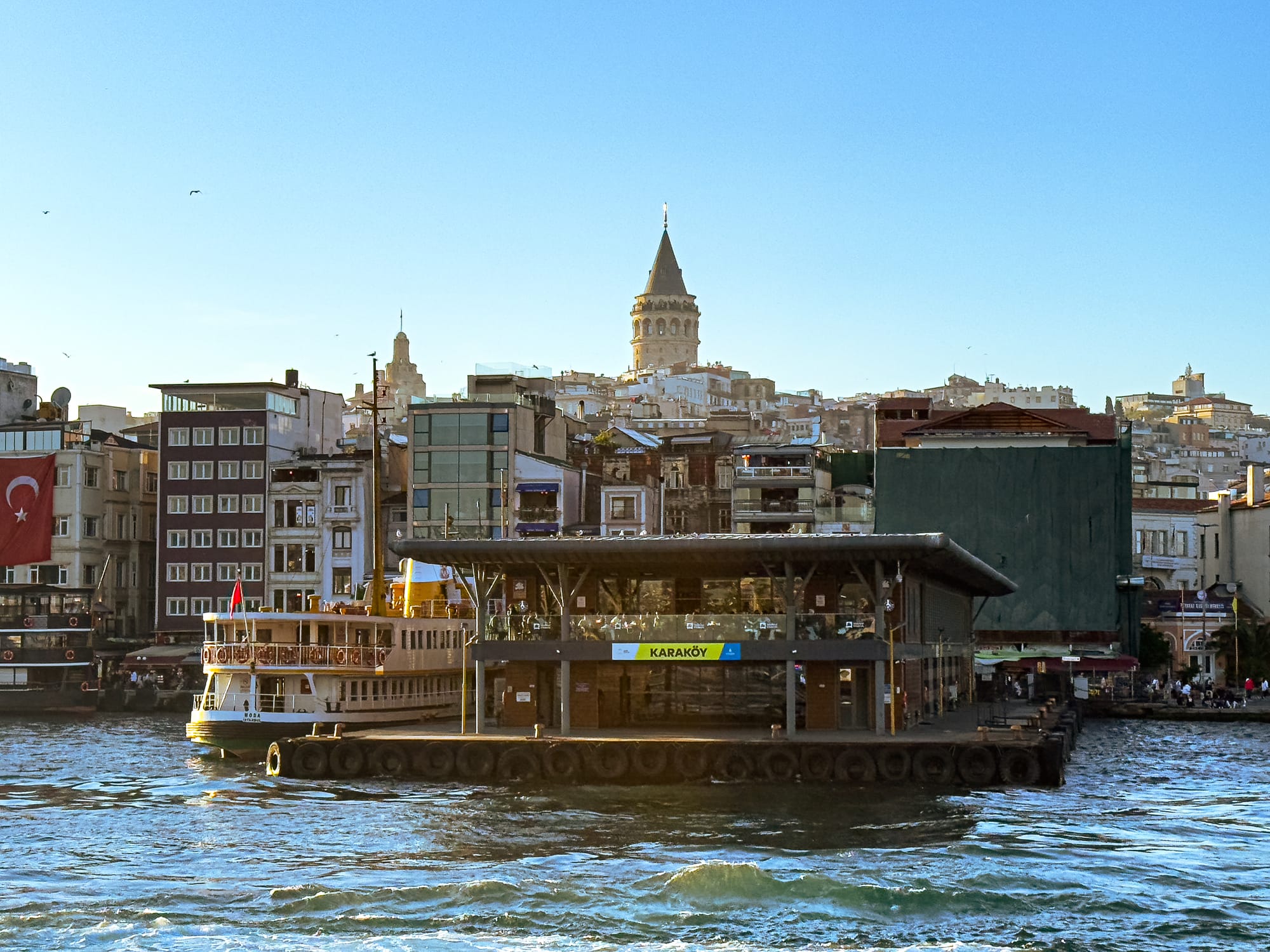
Today, it’s a popular viewpoint, offering sweeping panoramas over the city. From the water, though, it takes on a different mood—framed by the clustered hills of Istanbul and casting long shadows over the Golden Horn.
Dolmabahçe Palace
Perhaps the most ornate structure along the cruise route, Dolmabahçe Palace is a glittering reminder of the late Ottoman Empire’s European ambitions. Completed in the 1850s, the palace blends Ottoman, Baroque, and Neoclassical architecture. Its waterfront façade is particularly striking from the water, with symmetrical wings, marble staircases, and intricate iron gates.
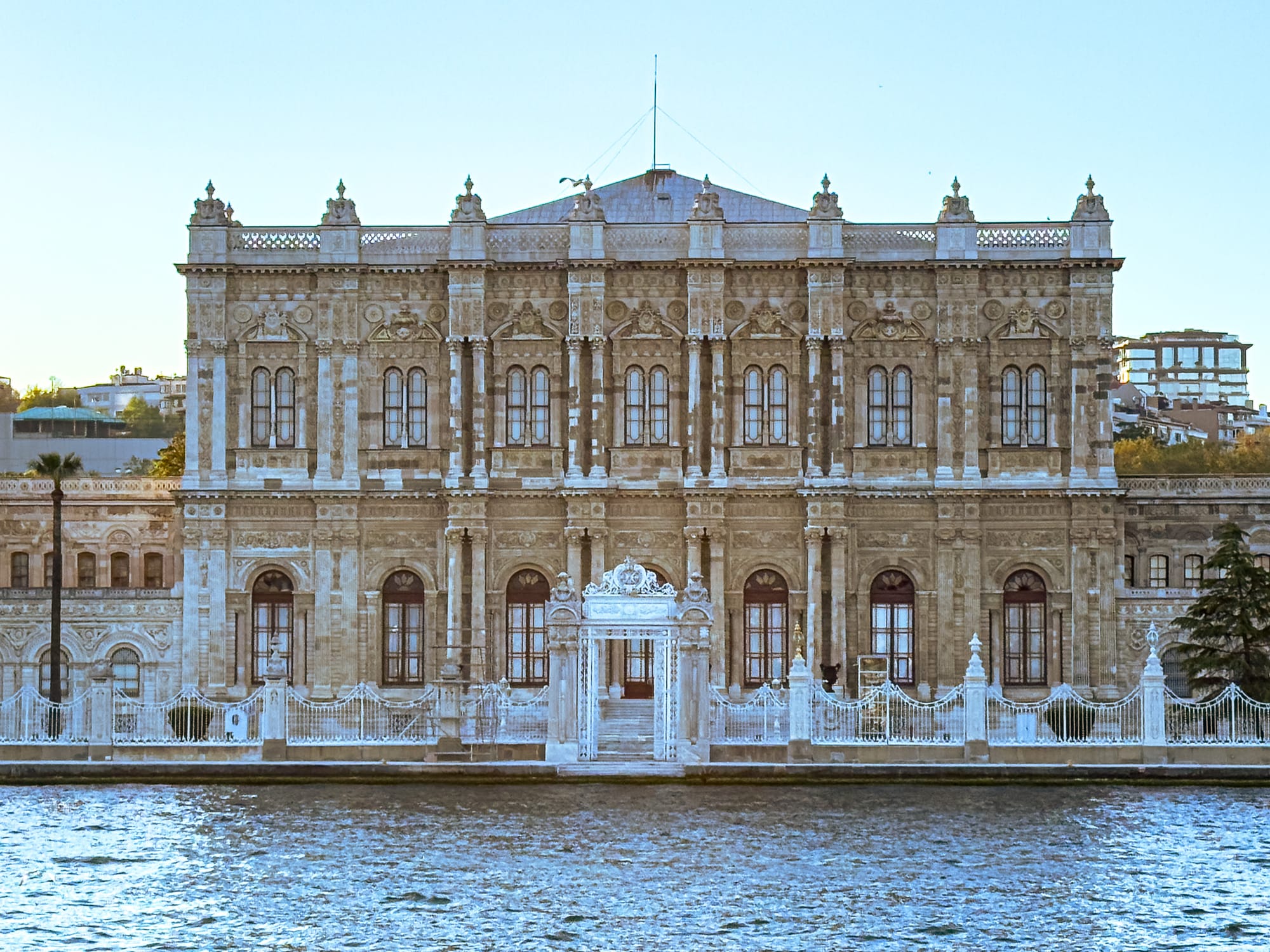
The palace replaced Topkapı as the seat of power, and its location right on the Bosphorus wasn’t accidental—this was a statement piece, meant to awe visiting diplomats. From the boat, it still does.
Ortaköy Mosque
A small but beautiful mosque that seems to float on the edge of the water, Ortaköy Mosque is one of Istanbul’s most photographed landmarks—and for good reason. It’s an exquisite example of Baroque-inspired Ottoman architecture. You’ll see its delicate minarets, creamy stonework, and the ever-busy square that surrounds it. This is the mosque that seems to appear in nearly every postcard.
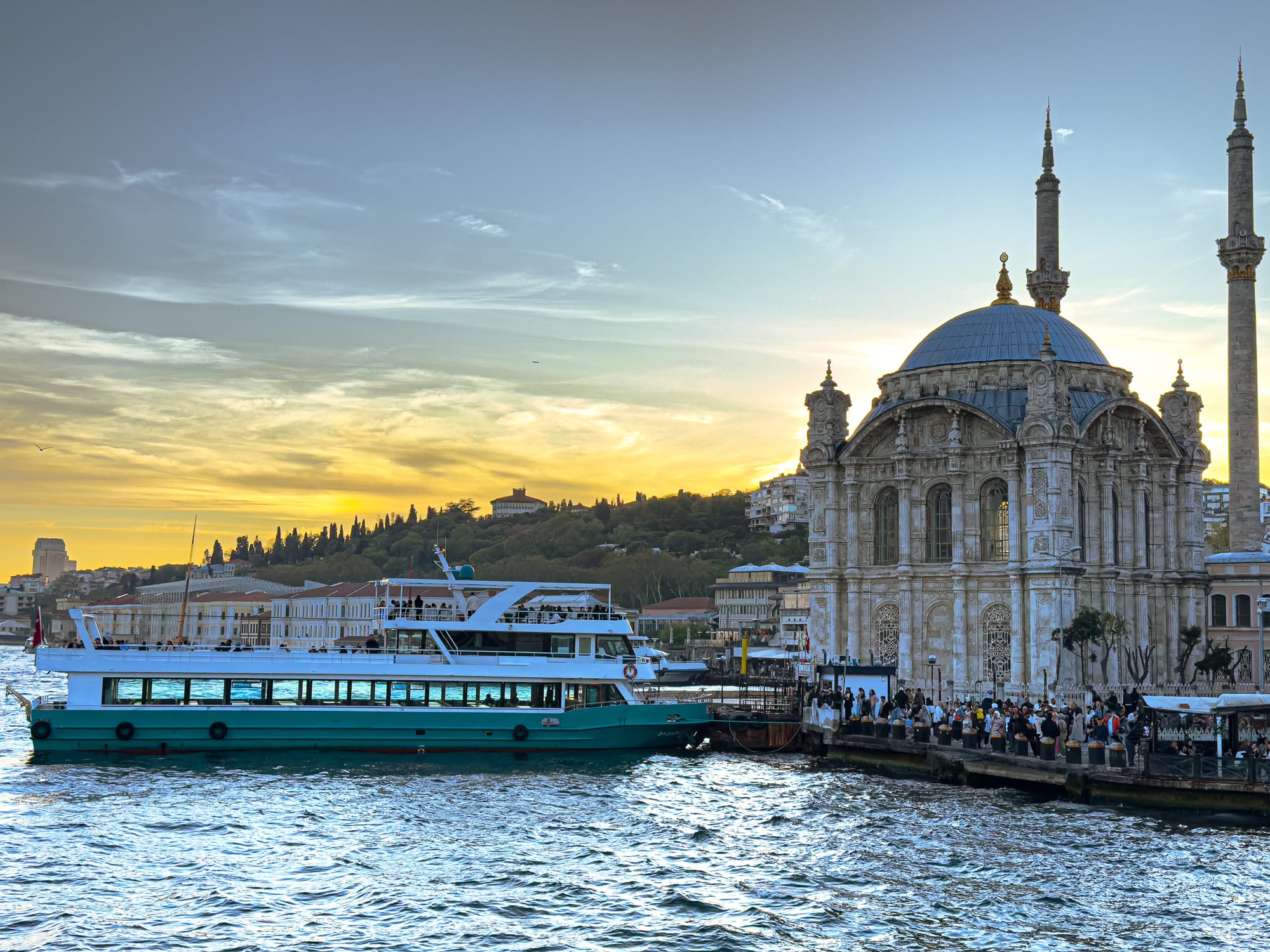
From the water, Ortaköy’s beauty intensifies. Behind it rises the Bosphorus Bridge, creating a contrast between old and new, sacred and infrastructural. It’s a moment worth slowing down for.
Bosphorus Bridge (15 July Martyrs Bridge)
Connecting Europe and Asia, this suspension bridge is more than a feat of engineering—it’s a symbol of Istanbul’s dual identity. On a Bosphorus cruise, the boat will pass directly underneath it. Look up, and you’ll see cars passing between continents. Look down, and you’ll feel the weight of history that’s passed beneath these waters.
At night, the bridge is often illuminated in changing colors. If you’re on a sunset cruise, you might catch this light show beginning as you return south.
Rumeli Fortress
Built in just four months by Sultan Mehmed II in 1452, this fortress helped the Ottomans cut off Byzantine trade and prepare for the conquest of Constantinople. It’s a massive, imposing structure with thick stone walls and towers that still loom large over the water.
From the boat, you’ll get a full view of its triangular layout and strategic hillside placement. It’s one of those places that can be hard to appreciate from land—but from the water, you see exactly why it mattered.
Neighborhoods on both sides
Beyond the landmarks, a Bosphorus cruise also gives you a sense of Istanbul’s neighborhood diversity. On the European side, you’ll pass Beşiktaş, Kabataş, and Karaköy. On the Asian side, neighborhoods like Üsküdar and Kadıköy appear more residential, calm, and quietly elegant.
Watching Istanbul’s daily life play out from the water is part of the magic. You’ll see couples leaning over balconies, kids playing football on waterfront sidewalks, ferries pulling into busy terminals, and tea sellers weaving through crowds. The city reveals itself in passing fragments.
What to know
Most cruises, including the one we recommend, last around 90 minutes to two hours. That’s enough time to see both continents, pass major sights, and enjoy the slow pacing—without feeling like it drags.
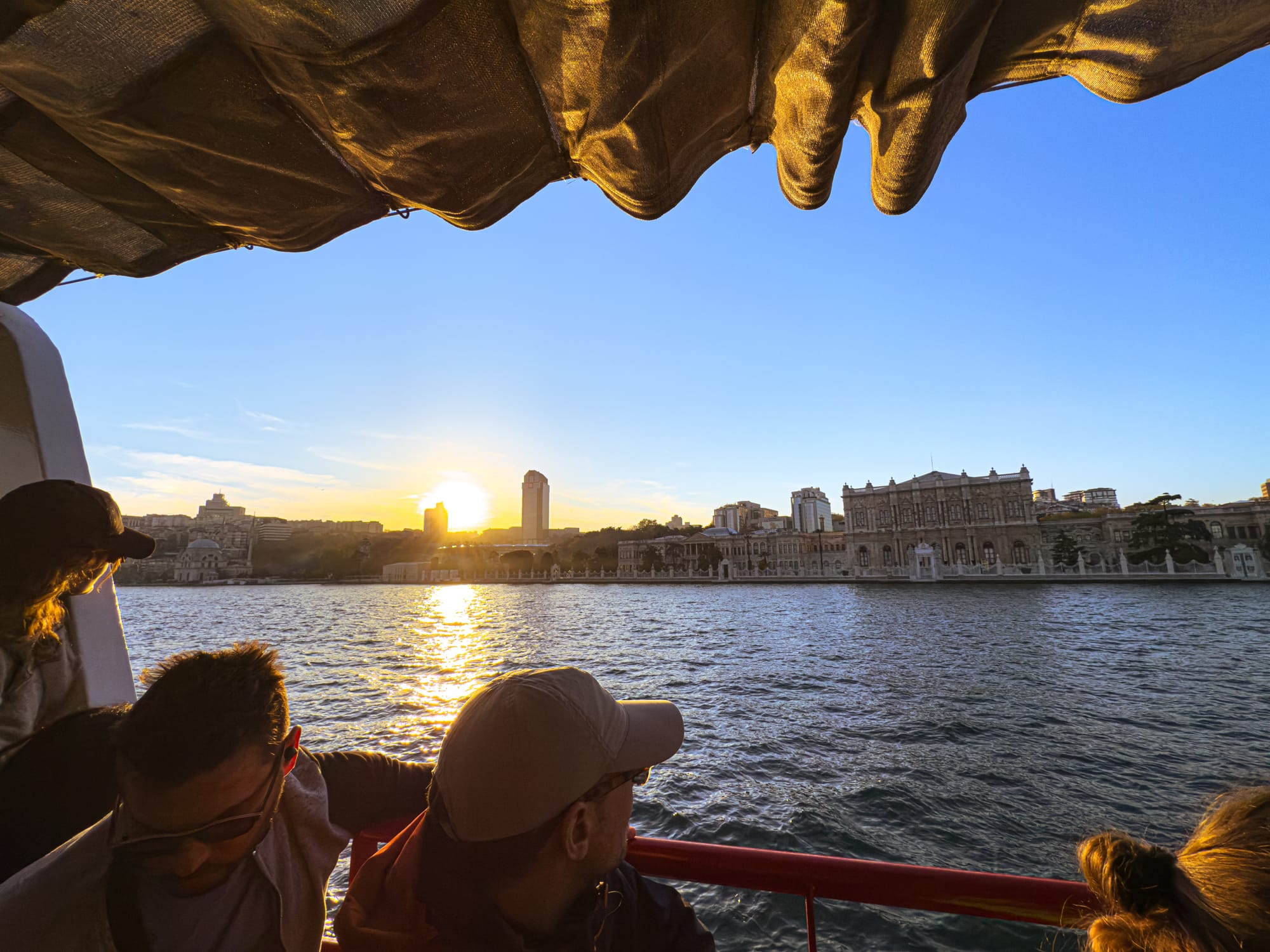
We think the cruise is perfect entry point. If you’ve just arrived in Istanbul and don’t know where to start, this gives you a sense of orientation. You’ll come off the boat knowing what parts of the city you want to return to.
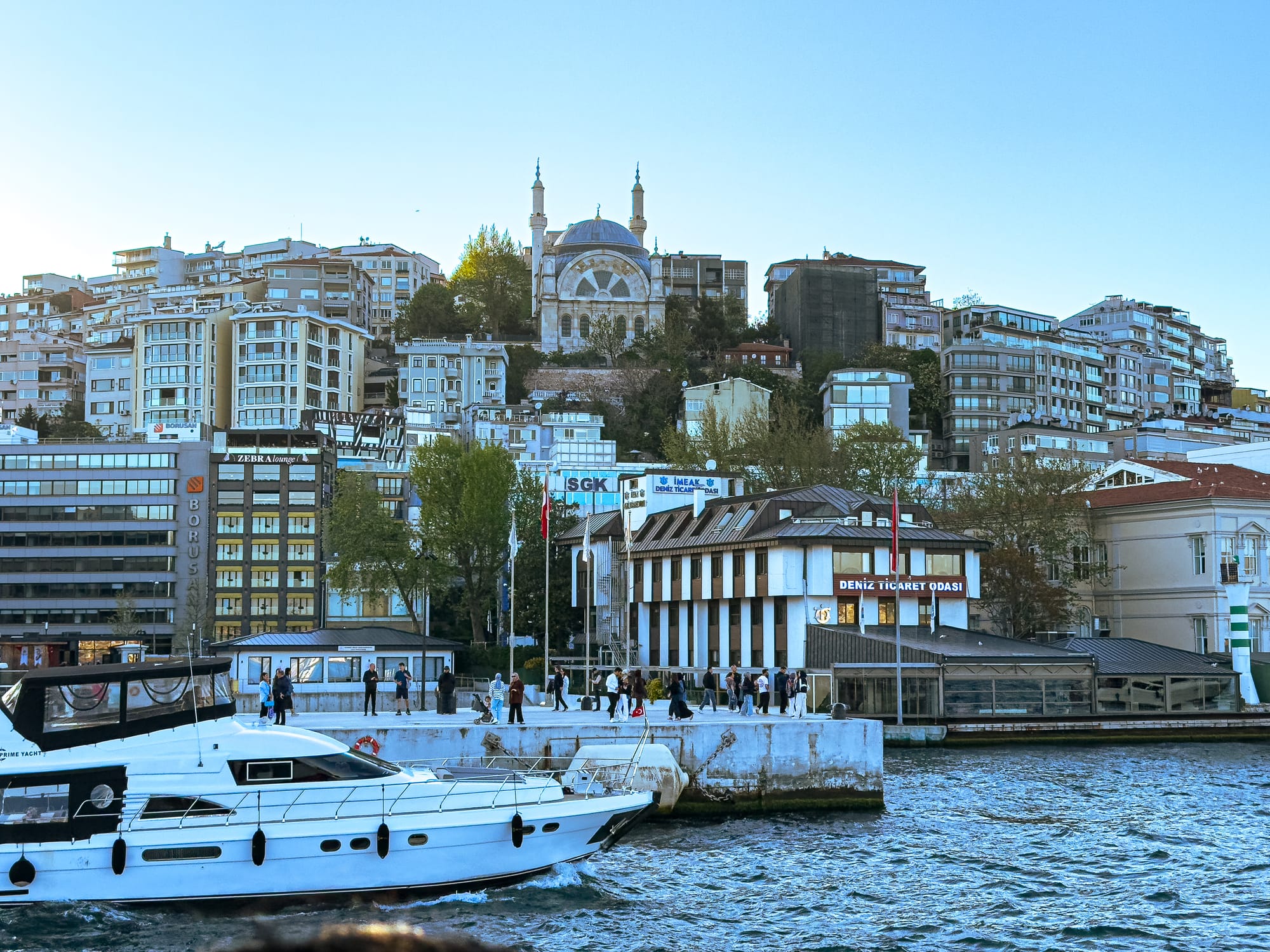
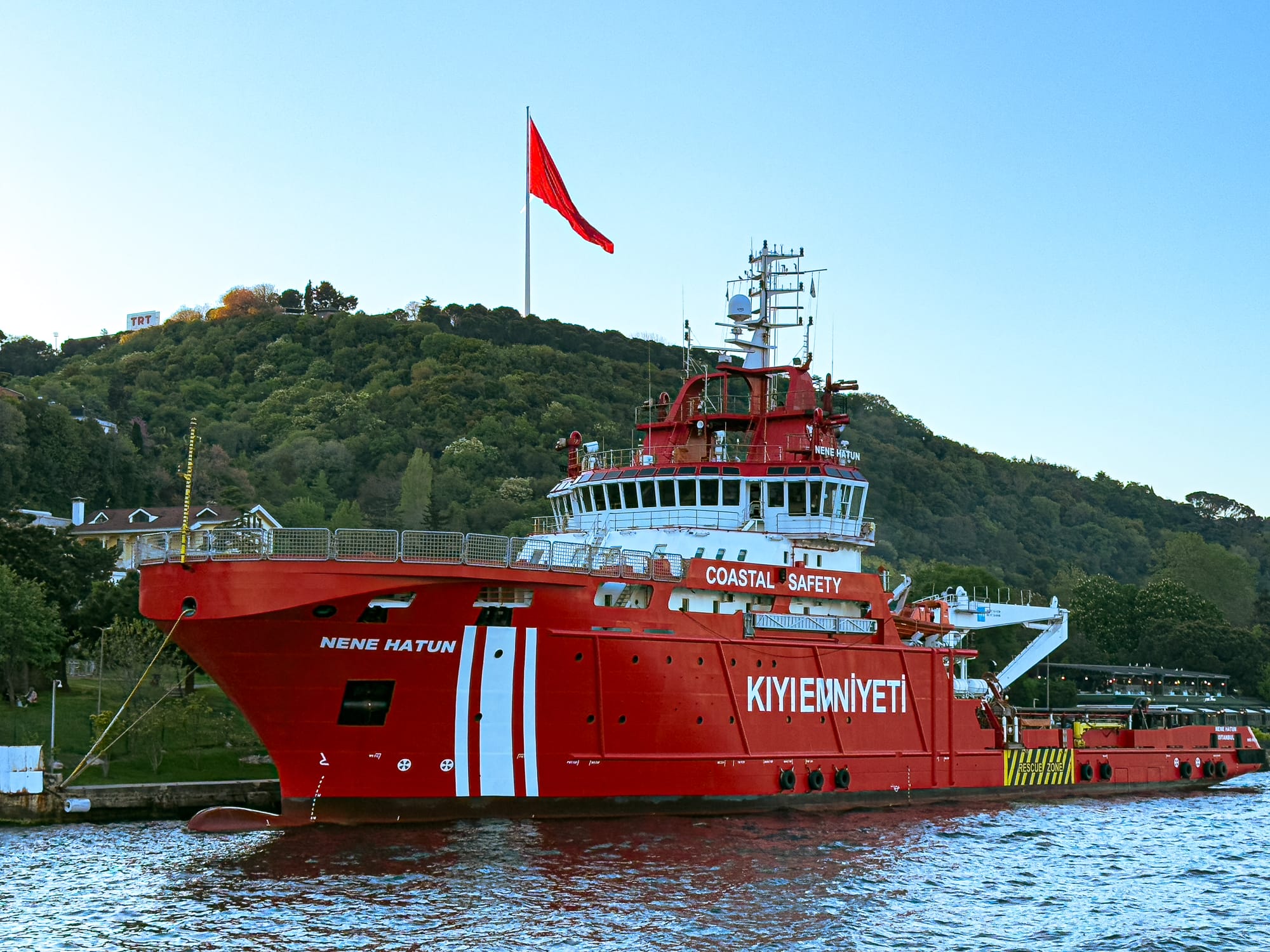
Istanbul’s contrasting shores—historic neighborhoods stacked on one side, coastal safety ships stationed on the other
It can get windy or chilly at night, so be sure to bring a jacket or a shawl, even if it's summer.
A calm way to begin or end your stay
Whether you take the cruise on your first evening or your last, it frames your time in Istanbul in a poetic way. The city, with all its noise, history, and contradictions, softens when viewed from the water. It becomes quieter, slower, more layered.
A Bosphorus cruise offers the kind of understated charm that makes it one of our top recommendations for travelers who want to see a little bit of everything.






